Carvings of
the Scottish Rite Double-Headed Eagle
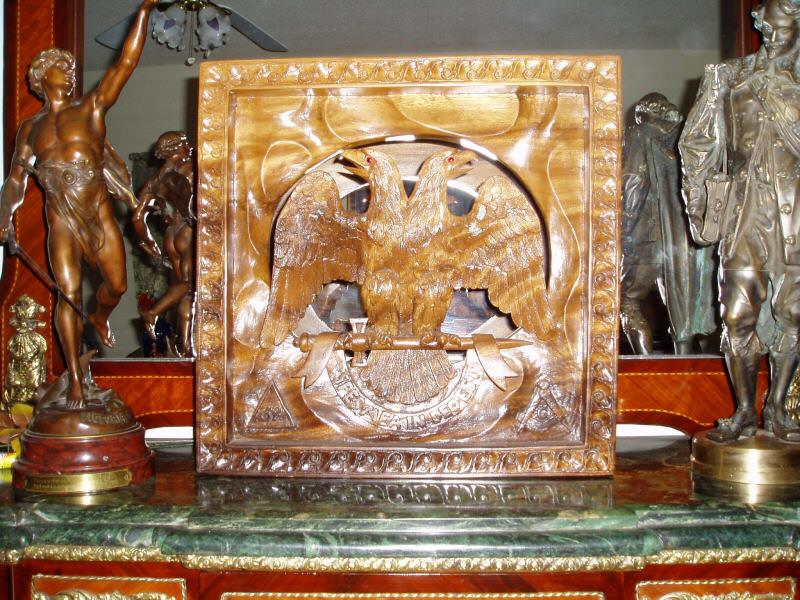
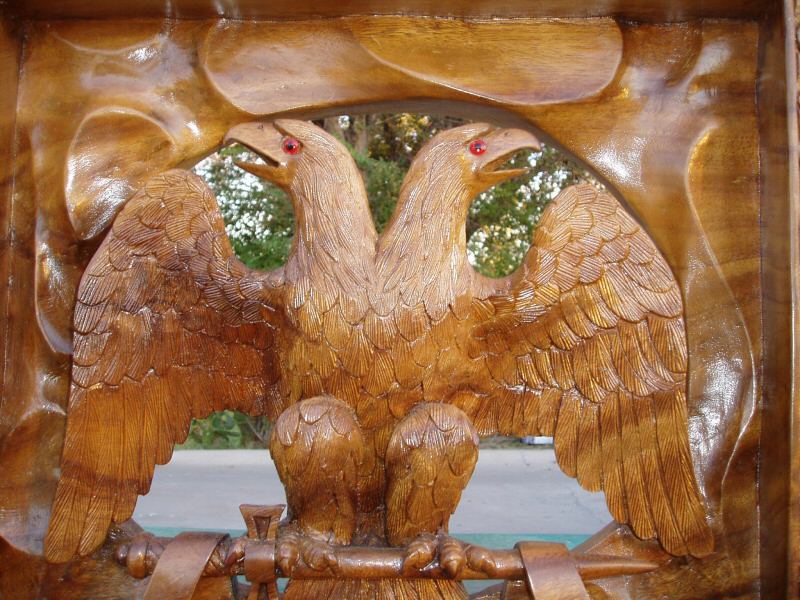
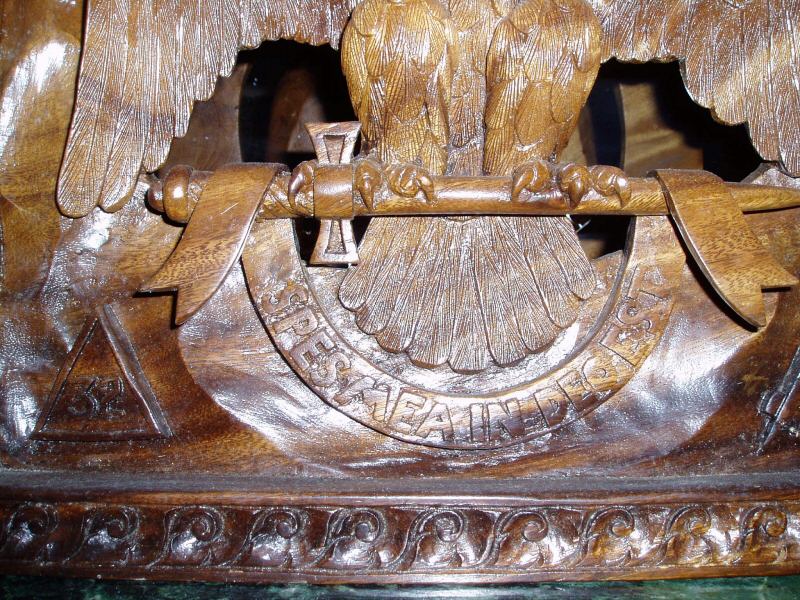
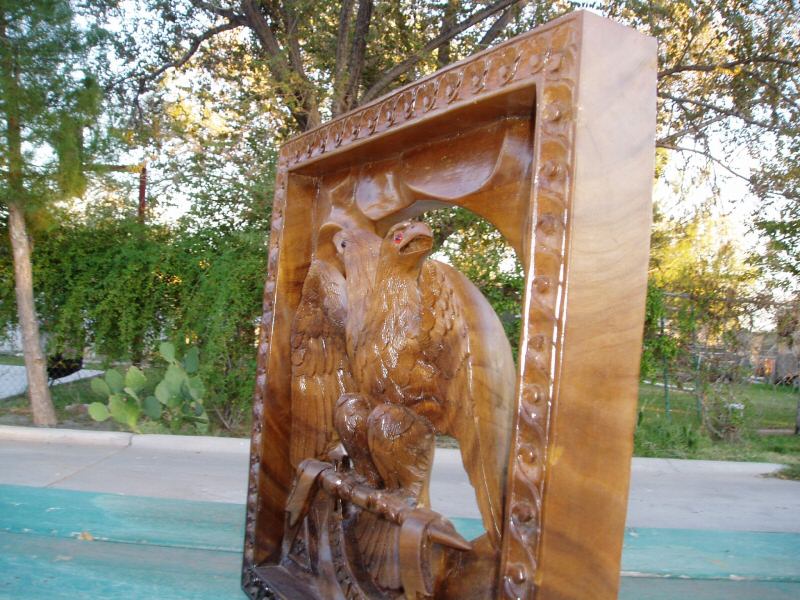

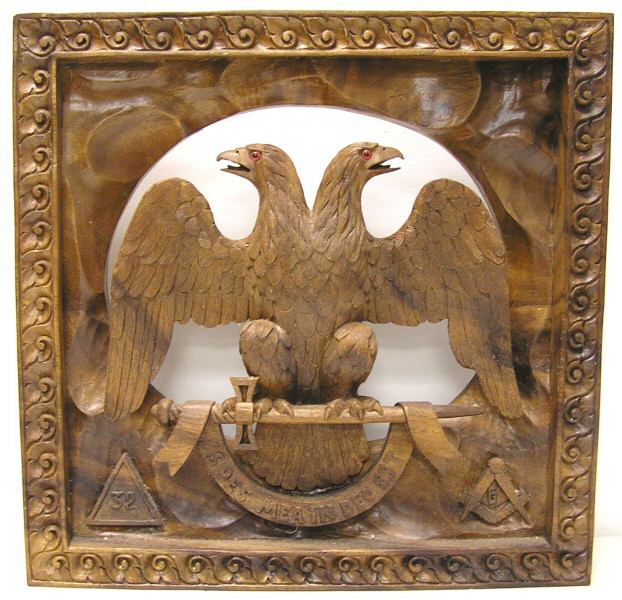
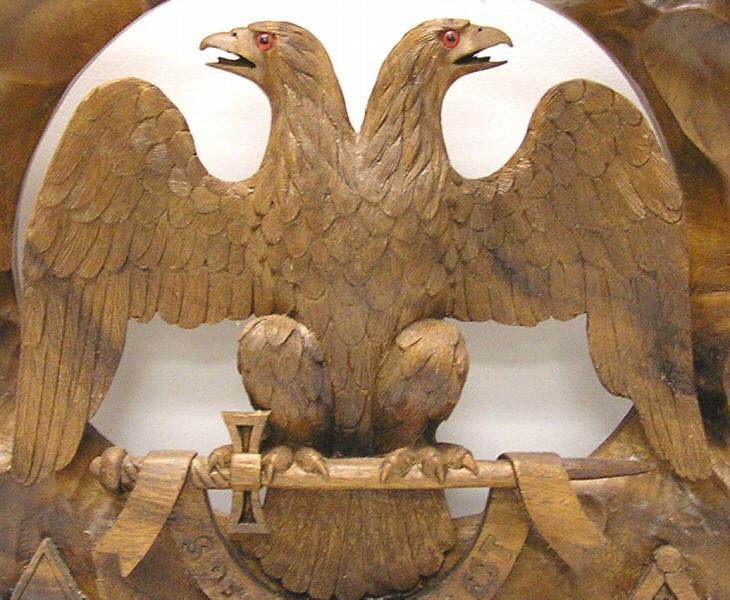

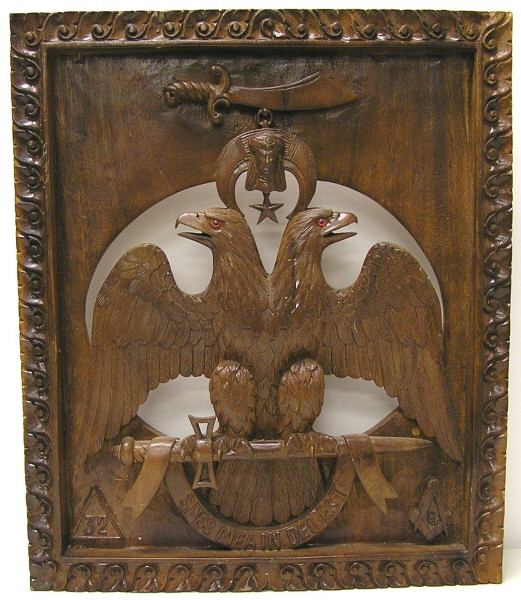
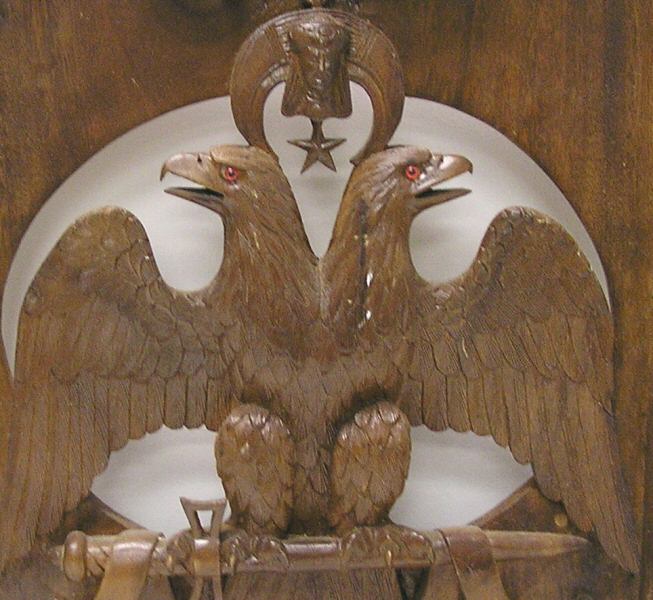
Some of the most appreciated artifacts among the
private collectors who are members of the Phoenixmasonry Masonic Museum and
Library are those items that were hand made (in this case carved) from a
single block of wood!
These carvings/plaques adorn the homes of their makers and stand as a
testament to their love of Scottish Rite
Freemasonry!
Double-Headed Eagle of Lagash
"As the Adept knows, the double-headed eagle is a Hermetic Symbol,
representing the Divine Generative Potency, and Productive Capacity of Nature.
like the human figure with two heads, one male the other female, - God and
Nature; the Egypian Osiris and Isis."
Long used as the insigne of a Scottish Rite Mason, the "Double Headed Eagle of
Lagash" is now the accepted emblem in the United States of America of the 32
Degree. It is the oldest crest in the world. It was a symbol of power more
than two thousand years before the building of King Solomon's Temple. No other
heraldic bearing, no other emblematic device of today can boast such
antiquity.
Triangle of Perfection (Wisdom, Power, and Beauty) - made to represent the
Tetragrammaton, or sacred name of God. Yahweh is the Hebrew vocalization of
the Tetragrammaton יהוה.
The two headed eagles are the coming together of two houses (families),
Abraham and Lot though Boaz and Ruth.
The Supreme Council awards the 33° as a way of honoring outstanding and
selfless work performed in the Rite or in public life. At its annual session
the Supreme Council elects members of the Rite to receive the degree. Members
unanimously so elected become Honorary Members of the Supreme Council.
"On the 1st of May, 5786, The Grand Constitution of the Thirty-third Degree,
called the Supreme Council of Sovereign Grand Inspectors General, was finally
ratified by His Majesty King of Prussia, who as Grand Commander of the order
of Prince of the Royal Secret, possesed Sovereign Masonic power over all the
Craft." - Origin and Progress of the Supreme Council 33rd Degree of the
Ancient and Accepted Scottish Rite for England, Wales, the Dominions and
Dependencies of the British Crown.
Gandaberunda (Gun-daa-bhae-rundaa, from Kannada) is an Indian mythological
bird. It is always shown with two heads and beaks, and believed to possess
magnificent strength. Ancient religious Hindu texts (Vishnu Puranas) annotate
the Gandaberunda to be a personification of Lord Vishnu, the Mediator (one of
the three primary Gods in Hinduism).
The double-headed eagle first originated in the mighty Sumerian city of Lagash.
From cylinders taken from the ruins of this ancient city, the double-headed
eagle seems to have been known to the kings of the time as the Storm Bird.
From the Sumerians this symbol passed to the men of Akkad, from whom it was
brought to the Emperors of the East and West by the Crusades.
Eagle, with a natural head, was an emblem of Jupiter, that is, god of moral.
To the pagans, Eagle, with a natural head, was an emblem of Jupiter, that is,
god of moral law and order, protector of suppliants and punisher of guilt.
Among the Druids, Eagle was a symbol of their Supreme Being.
The double-headed eagle was adopted by emperor Isaakios Komnenos (1057-1059)
being influenced from local traditions about such a beast (the haga) in his
native Paphlagonia in Asia Minor. Local legends talked about this giant eagle
with two heads that could easily hold a bull in its claws; the haga was seen
as a representation of power, and people would often "call" it for protection.
There seem to be some who believe that the double-headed eagle may have been a
Masonic symbol as early as the twelfth century, but, it probably was first
known to Freemasonry in 1758, upon the establishment of the Council of
Emperors of the East and West in Paris. This was a part of the Rite of
Perfection, a rite of twenty-five degrees, from which was evolved a large part
of the present system of Scottish Rite.
The successors today of the council of Emperors of the East and West, are the
various Supreme Councils of the Thirty-third Degree throughout the world. They
have inherited the insignia of the personal emblem of Frederick the Great,
First Sovereign Grand commander, who conferred upon the rite the right to use
in 1786; at which time seven additional Degrees were "Adopted" making
thirty-two "Ancient" and "Accepted" Degrees to which was added a governing
Degree, the 33rd.

|
